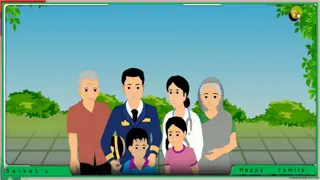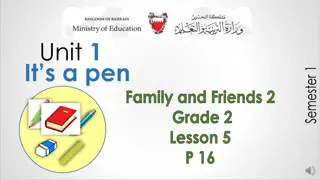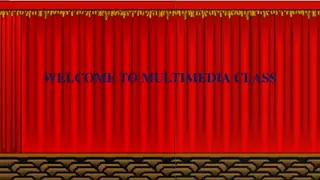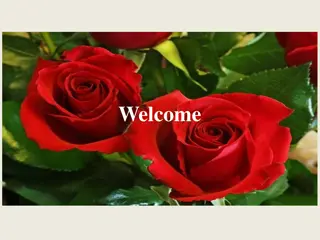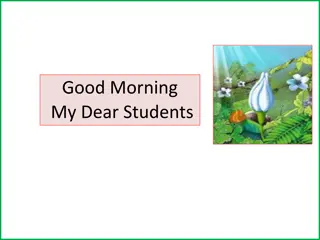
Exciting Science Lesson Activities for Learning About Seeds and Flowers
Engage in fun and educational activities exploring seeds, flowers, and pollination. Discover the parts of a seed, learn about Tāne Mahuta - New Zealand's largest Kauri tree, and dive into the world of flower parts and pollination. Uncover answers to questions like how water enters seeds and why seeds have coats. Delve into the importance of seeds as food and enjoy interactive tasks like seed drawings and flower part matching. Enhance your knowledge in an interactive and engaging manner!
Uploaded on | 2 Views
Download Presentation

Please find below an Image/Link to download the presentation.
The content on the website is provided AS IS for your information and personal use only. It may not be sold, licensed, or shared on other websites without obtaining consent from the author. If you encounter any issues during the download, it is possible that the publisher has removed the file from their server.
You are allowed to download the files provided on this website for personal or commercial use, subject to the condition that they are used lawfully. All files are the property of their respective owners.
The content on the website is provided AS IS for your information and personal use only. It may not be sold, licensed, or shared on other websites without obtaining consent from the author.
E N D
Presentation Transcript
Unit 3 Lesson Activities
Lesson 1 Activity 1(T ne Mahuta New Zealand s largest Kauri tree found in Waipoua Forest) Over1200 years ago, T ne Mahuta was a kauri seed T ne Mahuta Height is Girth is T ne Mahuta is named after? T ne Mahuta is ------- old.
Lesson 1 Activity 2: - Importance of seeds as a food. Seeds and nuts we eat. Seeds and nuts we eat.
Lesson 2 Lesson 2 Activity 1: Activity 1: - - Discover the parts of a seed Discover the parts of a seed Seed drawing-Taking a bean seed apart Split the bean open and draw what you can see. Make your drawings fill the boxes. Label your drawings using these words to help you. Draw a soaked bean seed. Seed coat( Testa) Seed leaf (Cotyledon) Young root (Radicle) Young shoot (Plumule) How to draw a bean seed
Lesson2 Lesson2 Activity 1: Activity 1: - - Discover the parts of a seed Discover the parts of a seed Seed drawing-Taking a bean seed apart Make your drawings fill the boxes. Label your drawings using these words to help you. Draw a soaked bean seed. Split the bean open and draw what you can see. Seed coat( Testa) Seed leaf (Cotyledon) Young root (Radicle) Young shoot (Plumule)
What did you find out? Use these questions to help you? 1. How does the water get into the seed? 2. Why do you think seeds have a coat? 3. Why are the seed leaves so big?
Lesson 4 Activity 2: Activity 2: - - Flower parts and pollination. Flower parts and pollination. Watch one of these YouTube videos on flower parts and pollination Parts of a flower and their function for kids Parts of flower- pollination htps://www.youtube.com/watch?app=desktop&v=SiFaN2xQg5g Parts of flower and their functions Parts of flower and their functions | Parts of flower and their functions | Parts of flower | Parts of flower and their functions | Parts of flower Activity next slide
The Flower The Flower Drag the definitions to the correct terms Usually brightly coloured to attract pollinators Stigma Become the seeds after being fertilised by the pollen Style Anther Male sex organ that contains the pollen Filament Holds the flower up to attract pollinators Holds up the stigma to pollinators and the pollen tube grows down it Ovary Ovule Sticky so that the pollen sticks to it Petal Holds the anther up to pollinators Stem Contains the ovules and becomes the fruit after fertilisation
The Flower The Flower Answers Sticky so that the pollen sticks to it Stigma Holds up the stigma to pollinators and the pollen tube grows down it Style Anther Male sex organ that contains the pollen Filament Holds the anther up to pollinators Contains the ovules and becomes the fruit after fertilisation Ovary Become the seeds after being fertilised by the pollen Ovule Petal Usually brightly coloured to attract pollinators Holds the flower up to attract pollinators Stem
Quiz Use the words to name the parts of the flower. Anther Filament Petal Ovary Sepal Stigma Receptable Style
Answer Filament Filament
Quiz Name the parts of the flower Need names and instructions in Te Reo
Compare insect and wind pollinated plants https://www.youtube.com/watch?app=desktop&v=Dfvyoir_ SCY
Compare insect and wind pollinated plants Drag the information to the correct terms pollination column Large amounts of light pollen Have scent No scent Feathery stigmas hand outside the flower Large stamens hang outside the flower Stamens surround by petals Sticky stigma inside flower Petals large and bright Produce nectar Petals small and dull Sticky, spiky pollen Don t produce nectar Insect Pollination Wind Pollination
Answers Insect pollination Insect pollination Have scent Sticky, spiky pollen Sticky stigma inside flower Stamens surround by petals Produce nectar Petals large and bright Wind pollination Wind pollination No scent Large amounts of light pollen Feathery stigmas hand outside the flower Large stamens hang outside the flower Don t produce nectar Petals small and dull
Pollination Pollination is carried out by wind or animals (usually insects but also birds and rodents) Pollen is transferred from the anther to the stigma
Pollination vs Fertilisation Pollination vs Fertilisation Pollination Pollination Pollination is carried out by wind or animals (usually insects but also birds and rodents) Pollen is transferred from the anther to the stigma The pollen tube grows down the style to the ovary y Fertilisation Fertilisation Takes place inside the ovary The pollen tube fuses with the ova and the male gametes (DNA) is transferred into an egg cell (ova). The fertilised ova become the seeds




